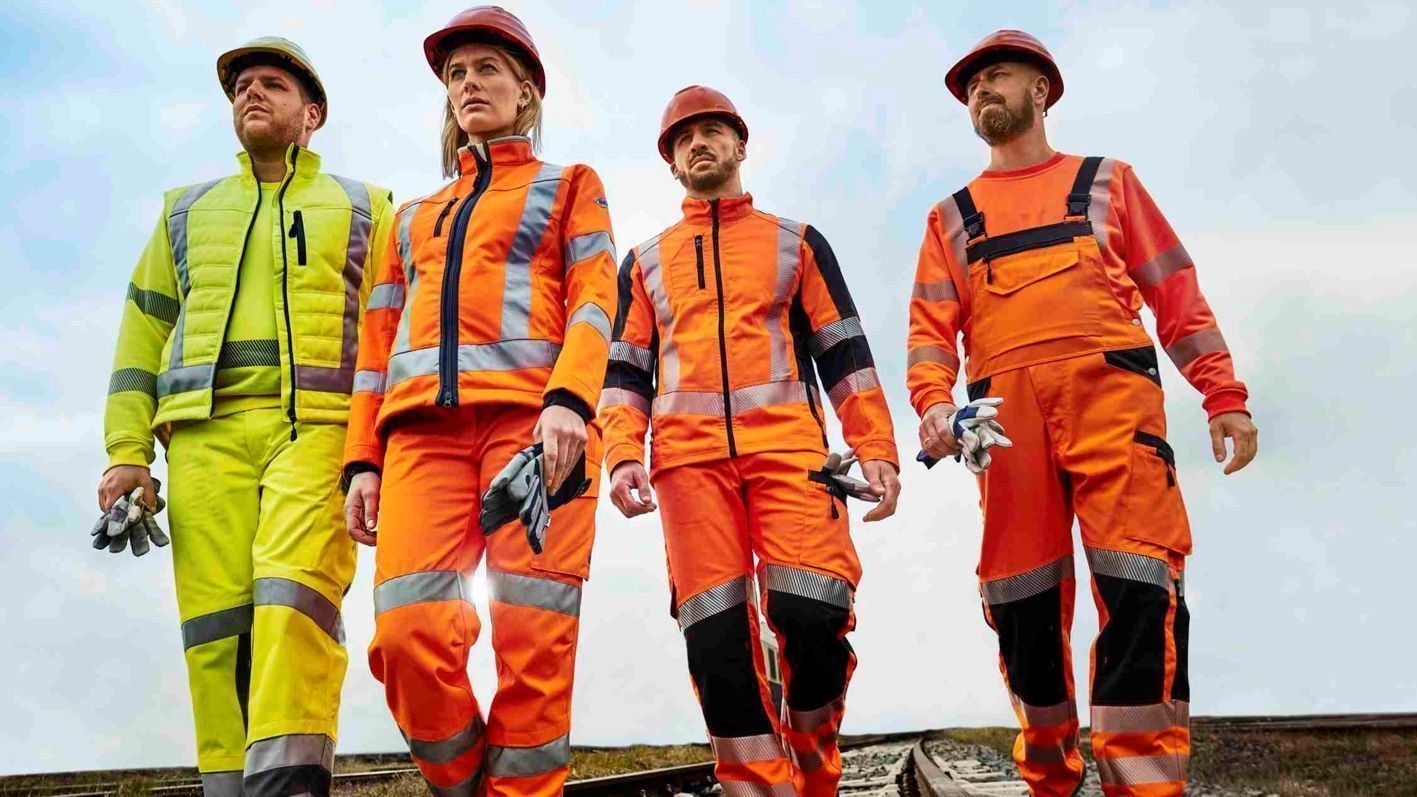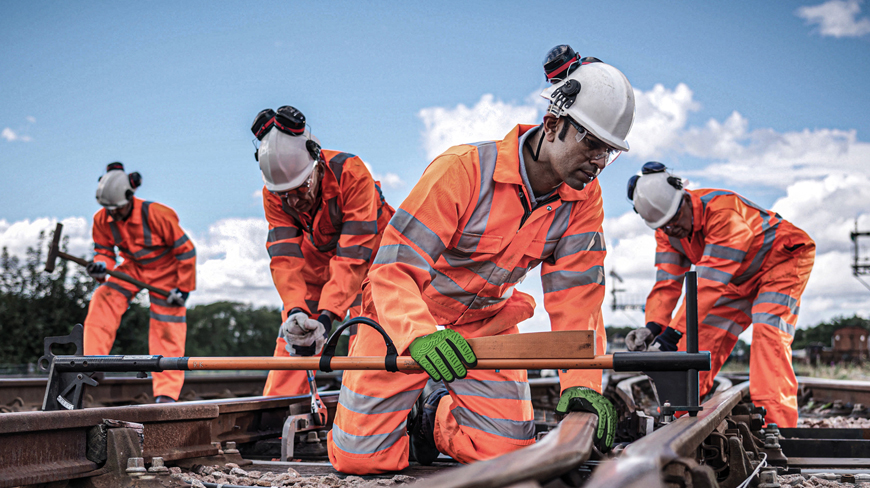Blog
High-Visibility Protective Gear for Increased Safety
In environments where visibility is crucial to safety, high-visibility (hi-vis) protective gear plays a vital role in preventing accidents and ensuring that workers are seen clearly in low-light or high-traffic areas. From construction sites and roadwork zones to warehouses and emergency response settings, hi-vis gear helps workers stand out, reducing the risk of collisions, injuries, or fatalities.
This comprehensive guide explores the importance of high-visibility protective gear, the types available, key features to look for, and recommendations for selecting the best equipment to enhance workplace safety.
What Is High-Visibility Protective Gear?
High-visibility protective gear refers to clothing and accessories made from bright, fluorescent materials and retroreflective tape or strips. These materials enhance the wearer’s visibility during both daytime and nighttime conditions, making them easily distinguishable in their surroundings.
Primary Components of Hi-Vis Gear:
- Fluorescent Colors: Bright colors like neon yellow, orange, and green are used to increase visibility in natural light.
- Reflective Strips: Retroreflective materials reflect light back toward its source, making the wearer visible under artificial lighting, such as vehicle headlights.
- Contrasting Fabrics: Used to define outlines of the body, especially in poorly lit conditions.
Why Is High-Visibility Gear Important?
In hazardous workplaces, visibility is often compromised due to environmental factors such as low light, inclement weather, or cluttered surroundings. Hi-vis gear ensures workers are easily identifiable, reducing the likelihood of accidents caused by poor visibility.

Key Benefits of Hi-Vis Gear:
- Enhanced Worker Safety: Prevents accidents by ensuring visibility to drivers, machinery operators, and other workers.
- Compliance with Safety Standards: Many industries require hi-vis gear to comply with OSHA, ANSI/ISEA, and other regulations.
- Improved Communication: Workers in hi-vis gear are easier to locate and coordinate with in busy or remote job sites.
Industries That Require High-Visibility Gear
Hi-vis gear is mandatory or highly recommended in several industries, including:
- Construction: To ensure safety near heavy machinery and high-traffic areas.
- Roadwork: For visibility to drivers during daytime and nighttime operations.
- Emergency Services: For first responders working in low-visibility or high-risk situations.
- Warehouse Operations: To stand out in busy environments with forklifts and other moving equipment.
- Mining and Oil & Gas: To provide visibility in dimly lit and hazardous conditions.
Types of High-Visibility Protective Gear
1. High-Visibility Vests
Lightweight and versatile, hi-vis vests are often worn over other clothing to increase visibility. They are common in construction, traffic control, and event management.
- Key Features: Lightweight fabric, multiple pockets, adjustable straps.
- Examples: ANSI Class 2 or Class 3 reflective vests.
2. High-Visibility Jackets
Designed for colder or wet conditions, hi-vis jackets combine weather resistance with reflective elements.
- Key Features: Insulation, waterproof materials, reflective strips on arms and torso.
- Examples: Bomber jackets, parkas.
3. High-Visibility Pants
These pants ensure visibility of the lower body and are often paired with hi-vis jackets for full-body protection.
- Key Features: Elastic waistbands, durable materials, reflective stripes around the legs.
4. High-Visibility Coveralls
For workers needing full-body coverage, hi-vis coveralls provide both visibility and protection from environmental hazards.
- Key Features: Durable fabric, flame resistance (optional), reflective elements on all major areas.
5. High-Visibility Accessories
Items such as gloves, helmets, hats, and armbands enhance visibility and can be used to complement other hi-vis gear.

- Key Features: Retroreflective strips, weatherproof materials.
Standards and Regulations for High-Visibility Gear
ANSI/ISEA 107 Standards
In the U.S., the ANSI/ISEA 107 standard defines the requirements for hi-vis clothing based on the level of risk in a work environment.
- Class 1: For workers in low-risk environments (e.g., parking attendants).
- Class 2: For medium-risk environments (e.g., construction workers, warehouse operators).
- Class 3: For high-risk environments requiring maximum visibility (e.g., road crews, emergency responders).
ISO 20471 Standards
Globally, ISO 20471 provides similar guidelines for hi-vis clothing used in professional settings, ensuring workers have adequate visibility under varying conditions.
Key Features to Look for in Hi-Vis Gear
- Durability
Hi-vis gear should withstand wear and tear from rugged environments. Look for materials like polyester or ripstop fabric that resist abrasions and tears. - Weather Resistance
For outdoor work, choose waterproof, windproof, or insulated hi-vis gear to provide comfort and safety in adverse weather conditions. - Breathability
In hot climates or during physically demanding tasks, breathable fabrics help prevent overheating. - Reflectivity
Ensure the gear has adequate reflective elements that comply with industry standards. - Fit and Comfort
Ill-fitting gear can restrict movement or become a safety hazard. Opt for adjustable or tailored hi-vis clothing to ensure a proper fit. - Custom Designs: Personalized hi-vis gear for specific industries, improving both functionality and comfort.Lightweight and versatile, hi-vis vests are often worn over other clothing to increase visibility. They are common in construction, traffic control, and event management.
Top Recommendations for Hi-Vis Gear
1. For Construction Workers
- Carhartt High-Visibility Class 2 Vest: Lightweight, durable, and ANSI-compliant.
- Portwest Class 3 Waterproof Jacket: Combines weather protection with visibility for outdoor projects.
2. For Road Workers
- Radians Class 3 Safety Jacket: Offers full visibility and warmth for highway workers.
- 3M Reflective Pants: Ensures lower-body visibility in high-traffic zones.
3. For Emergency Responders
- ML Kishigo Brilliant Series Vest: Designed for maximum visibility in both daylight and low light.
- Ergodyne GloWear 8910HL Hard Hat Cover: Increases visibility of headgear during nighttime operations.
Maintaining High-Visibility Gear
Proper maintenance of hi-vis gear ensures it remains effective and compliant with safety standards:
- Regular Cleaning: Wash according to manufacturer instructions to remove dirt and grime that can reduce visibility.
- Inspect for Damage: Check for tears, fading, or worn reflective tape. Replace damaged gear promptly.
- Storage: Store in a dry, cool place to prevent fading or degradation.
The Future of High-Visibility Gear
Advances in technology are enhancing the effectiveness of hi-vis gear:
- LED Integration: Incorporating LED lights into clothing for increased visibility.
- Smart Materials: Hi-vis gear with sensors that monitor environmental conditions and alert wearers to hazards.
- Custom Designs: Personalized hi-vis gear for specific industries, improving both functionality and comfort.
Conclusion
High-visibility protective gear is a crucial element of workplace safety, particularly in industries with significant visibility challenges. By understanding the types, features, and regulations surrounding hi-vis gear, employers and workers can make informed decisions to ensure safety, compliance, and efficiency. Investing in high-quality hi-vis gear is not just about following regulations—it’s about protecting lives and fostering a culture of safety.


